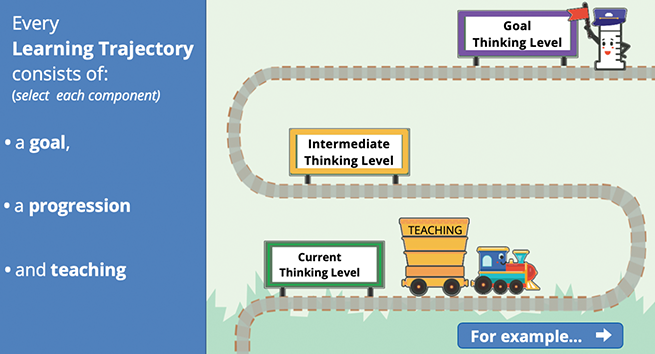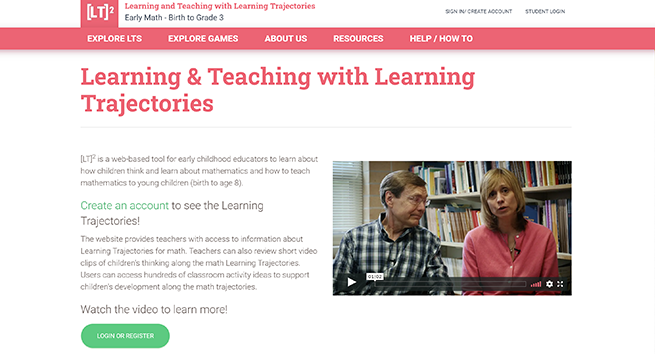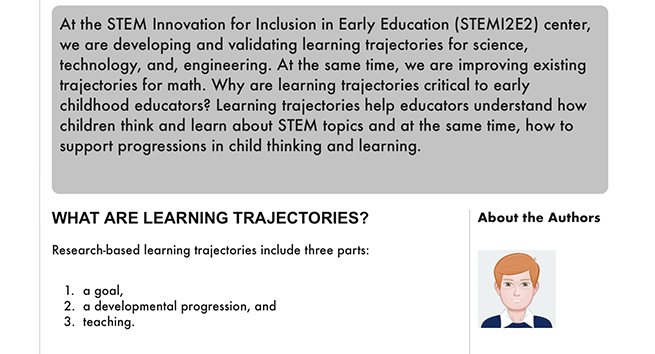Why are learning trajectories critical to adults including educators and caregivers working with young children?
Learning trajectories help us understand how children think and learn about STEM topics and at the same time, how to support progressions in child thinking and learning.
What are learning trajectories?
Research-based learning trajectories include three parts: a goal, a developmental progression, and teaching.
Take a microlesson to learn about learning trajectories and each of the components.
How can I learn more?
STEMIE is currently developing and validating learning trajectories for science, technology, and, engineering. At the same time, we are improving existing trajectories for math. In the meantime, there are existing resources you can access to learn more about learning trajectories:
Learning and Teaching with Learning Trajectories [LT]2 website
STEMIE leadership team members, Doug Clements and Julie Sarama have designed and developed research-based math learning trajectories based on reviewing and learning from decades of research and from their own research and work with practitioners and young children. [LT]2 is a web-based tool for early childhood practitioners to learn about how children think and learn about mathematics and how to teach mathematics to young children (birth to age 8). The website includes video demonstrations of children’s thinking and learning, as well as math activities and ideas for practitioners to support children’s progression.
Practice Highlights: Using Learning Trajectories for Meaningful STEM Learning
This blog post authored by Doug Clements and Julie Sarama in STEMIE’s STEM4EC community provides an overview of why learning trajectories are important, what they are, and the practice potential for children with disabilities.



